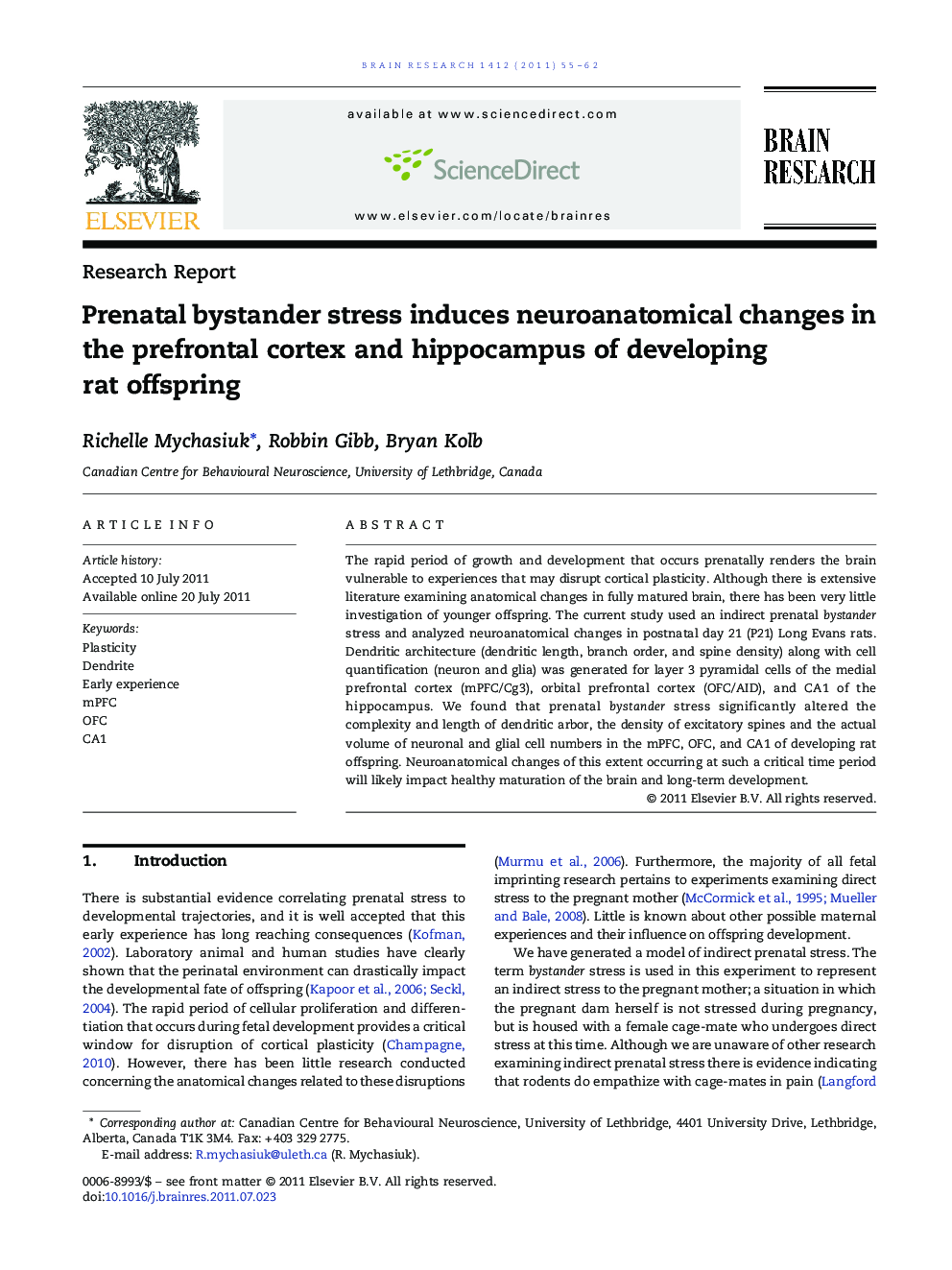| Article ID | Journal | Published Year | Pages | File Type |
|---|---|---|---|---|
| 4325633 | Brain Research | 2011 | 8 Pages |
The rapid period of growth and development that occurs prenatally renders the brain vulnerable to experiences that may disrupt cortical plasticity. Although there is extensive literature examining anatomical changes in fully matured brain, there has been very little investigation of younger offspring. The current study used an indirect prenatal bystander stress and analyzed neuroanatomical changes in postnatal day 21 (P21) Long Evans rats. Dendritic architecture (dendritic length, branch order, and spine density) along with cell quantification (neuron and glia) was generated for layer 3 pyramidal cells of the medial prefrontal cortex (mPFC/Cg3), orbital prefrontal cortex (OFC/AID), and CA1 of the hippocampus. We found that prenatal bystander stress significantly altered the complexity and length of dendritic arbor, the density of excitatory spines and the actual volume of neuronal and glial cell numbers in the mPFC, OFC, and CA1 of developing rat offspring. Neuroanatomical changes of this extent occurring at such a critical time period will likely impact healthy maturation of the brain and long-term development.
► Prenatal bystander stress alters neuroanatomy of developing offspring. ► Alterations can be found at P21 in Cg3, AID, and CA1. ► Morphological changes in dendritic length, branching, and spine density are found. ► Changes in neuron and glial cell numbers are identified. ► Neuroanatomical changes associated with bystander stress are sex-dependent.
